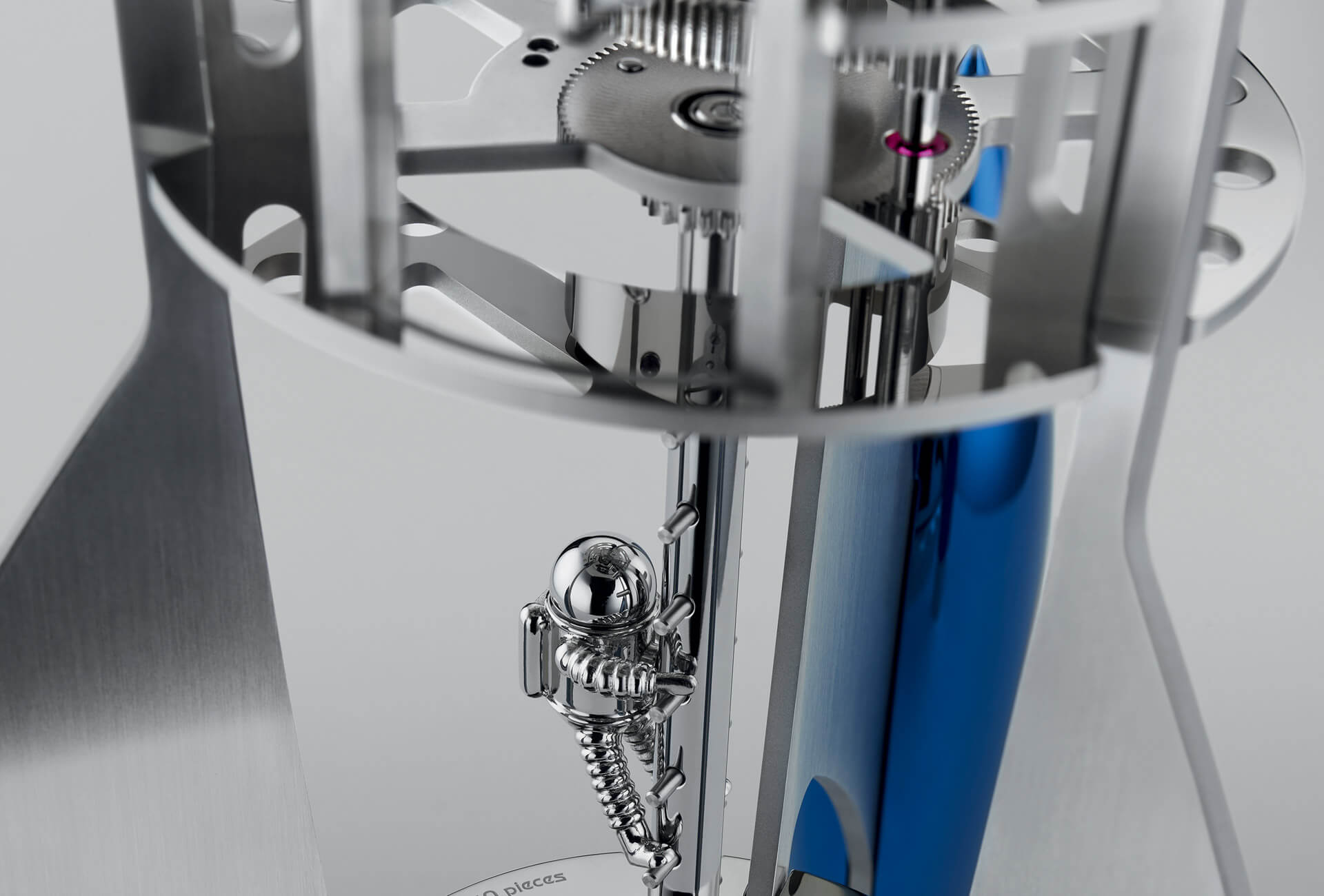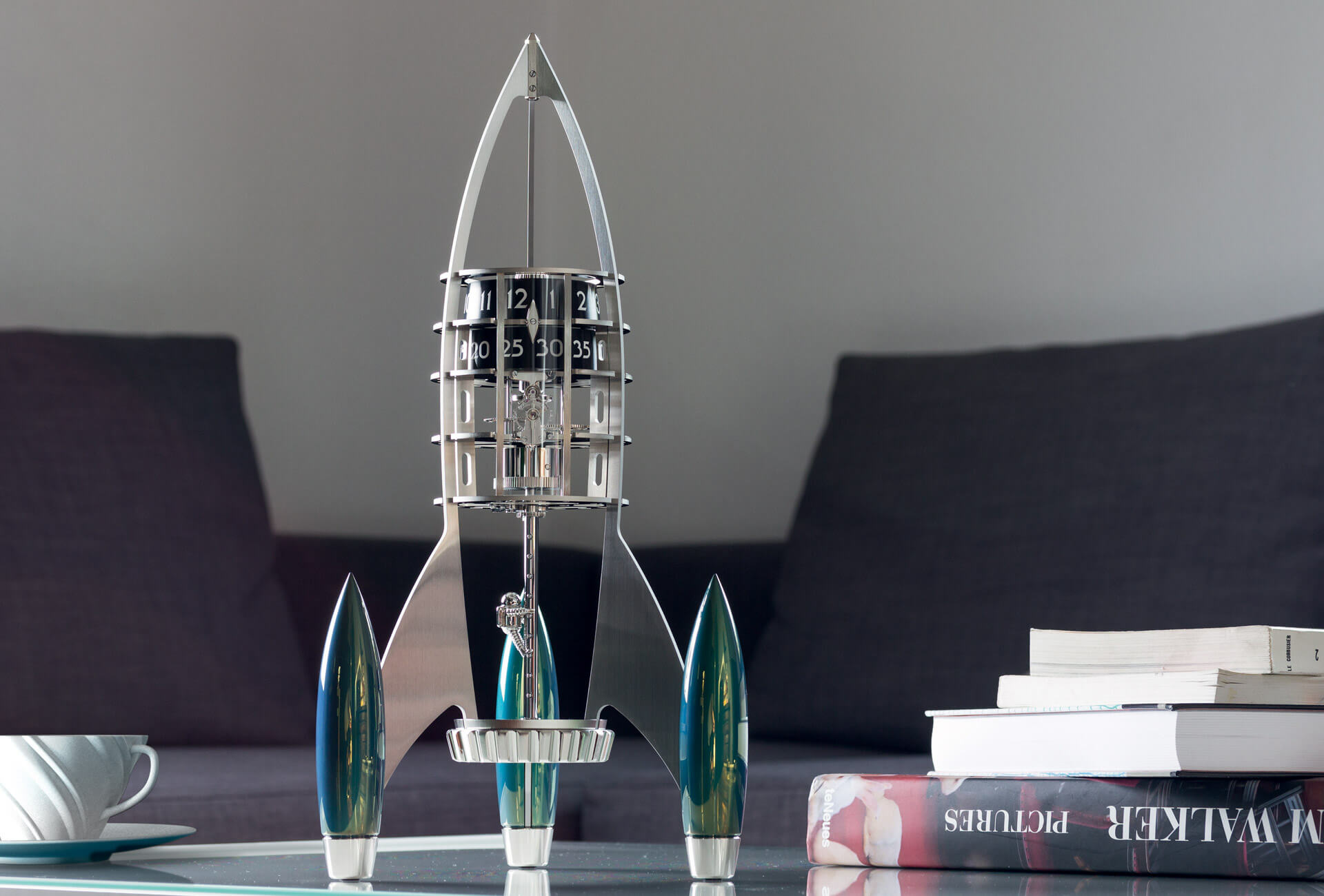“Fly me to the moon
Let me play among the stars
Let me see what spring is like on
Jupiter and Mars…”
This song was written many moons ago, in 1954, and by the time Frank Sinatra recorded it ten years later, we still had to wait another five before we actually did fly to the Moon and land on it. Since then we have sent flybys, orbiters, landers and rovers beyond the Moon to Mars, with explorations of Jupiter, Saturn, Uranus and Neptune hot on their trails. A manned round-trip flight to Mars is scheduled for the 2030s. This is to say that we have an insatiable curiosity to know what is out there and how it all began.
In addition to our space missions and probes, thousands of meteorites fall from the skies every year, providing further clues as to the making of our universe. Meteorite hunters track down rare fragments in far-flung corners of the Earth to provide new sources of scientific information. And sometimes, fragments are used for purely aesthetic reasons, to augment the mystery of beautiful objects, including watches. Fragments or not, here are three new timepieces that shoot for the stars.
With the Space Mystery we discover fragments of the Moon, of Mars, and, for the first time, of… the carbonaceous CM chondrite meteorite.
Mysterious origin
Louis Moinet invented the chronograph in 1816. Watchmaker, he was no less a painter and sculptor, and this heritage is reflected in Louis Moinet timepieces today. Its philosophy to create “limited edition mechanical art” is demonstrated with the Louis Moinet Space Mystery. One of the brand’s signature features is to use extremely rare materials, and with the Space Mystery we discover fragments of the Moon, of Mars, and, for the first time, of… the carbonaceous CM chondrite meteorite. This meteorite contains amino acids, and as the origin of the meteorite is a mystery, the presence of non-terrestrial amino acids could indicate it came from outside our solar system over 4.5 billion years ago. Could they be the very first known sign of life in the Universe?
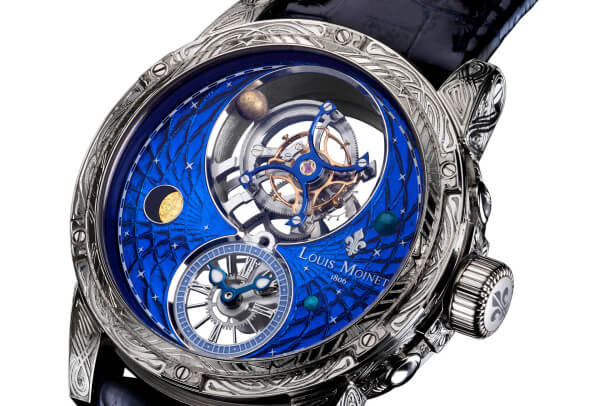
The Space Mystery continues with the “satellite tourbillon®” rotating on its axis while in orbit with a “satellite” planet that stabilizes the cage, revolving every 60 seconds. This Louis Moinet exclusivity is presented at 12 o’clock on an equally exclusive “Magic Blue” dial, in a large tourbillon cage boasting 13.59 mm in diameter, suspended in mid-air 1.8 mm above the dial. Hours and minutes are read in a large aperture at 6 o’clock. At 9 o’clock, we see the fragment of the mystery meteorite, while those of the Moon and Mars decorate the case band on either side of the crown. Equipped with the Calibre LM48 manual movement with 72 hours of power reserve, developed by Louis Moinet and produced and assembled by Impulsion in partnership with TEC Ebauches, the Space Mystery is presented in a 46 mm round 18k gold case, with four versions of two watches each: white or pink gold, smooth or beautifully hand-engraved.
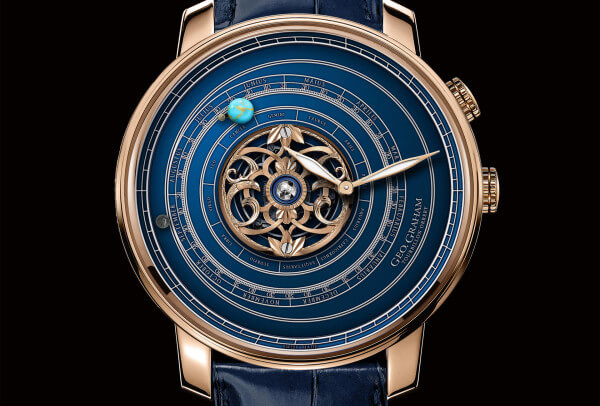
A 300-year calendar
“Stargazing” takes on a whole new definition at Graham, with the Geo.Graham Orrery Tourbillon. This portable Planetarium takes its name from the Earl of Orrery, who received the first mechanical model of the solar system made by geophysicist, clockmaker and watchmaker George Graham in 1713. A first Graham anniversary wristwatch edition in 2013 represented the Sun, Mars, Earth, and the Earth’s Moon with precious stones and metal. In 2017, while the sun is a splendid cabochon diamond topping a hand-engraved central rose gold tourbillon bridge, the Earth, the Moon and Mars are made from fragments of… the Earth, the Moon and Mars. Earth, a piece of mined Kingman turquoise from Arizona, and the Moon and Mars, fragments extracted from fallen meteorites, follow their paths on a lacquered blue dial. Three scales on the dial measure time on Earth, the Gregorian calendar, and the Zodiac system, displayed within a 48 mm x 17.6 mm pink gold case. Hours and minutes are read with off-centre skeleton pink gold hands with luminescent coating.
As in 2013, the G1800 Tourbillon Orrery manual-winding movement is exclusively crafted for Graham by the Manufacture Christophe Claret. Once wound, and with a power reserve of 72 hours, the Moon will require correction every 7.5 years, Mars every 25 years, and the Earth every… 1,156 years. In case you forget, a disc on the back is engraved with a year counter and planet correction indicators for the next 100 years. Inside the presentation box, the adjusting tool comes with two additional 100-year discs, for a total calendar of 300 years. This timepiece is available in a limited edition of eight serial-numbered and hand-engraved pieces.
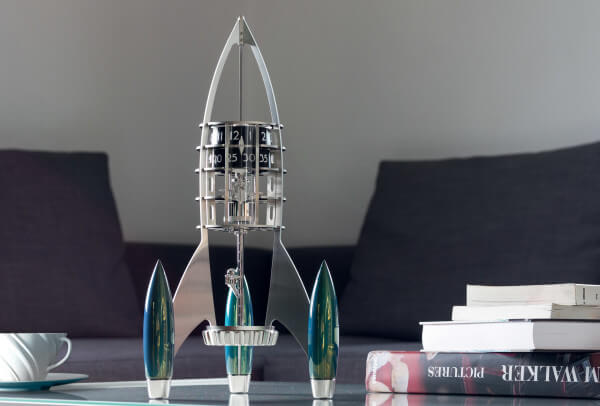
Bon voyage
At MB&F, astronaut Neil has no meteorite fragments. Instead, he seems all set to blast off in his private rocket ship to find his own, taking us with him on an imaginary ride into space. Destination Moon is an original table clock inspired by the basic design of a 1960s spaceship, conceived by MB&F and built by L’Epée 1839. Space takes on a whole new dimension here as the structure of the rocket / clock has been hollowed out to leave a lot of empty space – a deliberate decision to create an object that is both ethereal and impressively present. With a height of 41.4 cm and a diameter of 23.3 cm, a satin-finished stainless steel frame, and three highly polished stabilizing “landing pods”, the clock is stunning. Weighing 4.0 kg, Destination Moon comprises a total of 237 components, including 164 for the movement that has a power reserve of eight days from a single barrel.
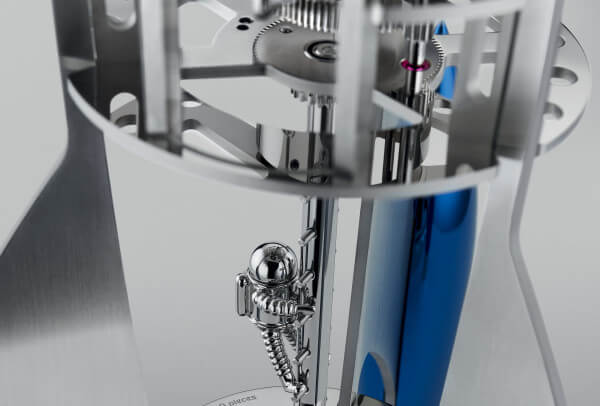
With a vertical construction similar to that of a rocket, Destination Moon is powered by the manual winding oversize crown at its base, with power transferred to the mainspring barrel via the boarding ladder. A mineral-glass-protected regulator is positioned vertically below the time display where hours and minutes are indicated on two rotating stainless steel discs with stamped white numerals. Time is set using a knob at the top of the movement. And Neil, made of silver with a stainless steel helmet, is magnetically attached to the ladder, mobile and awaiting only your imagination to prepare for the next mission. Destination Moon is available in four limited editions of 50 pieces each in black, green, or blue PVD, plus palladium (silver). Bon voyage!







